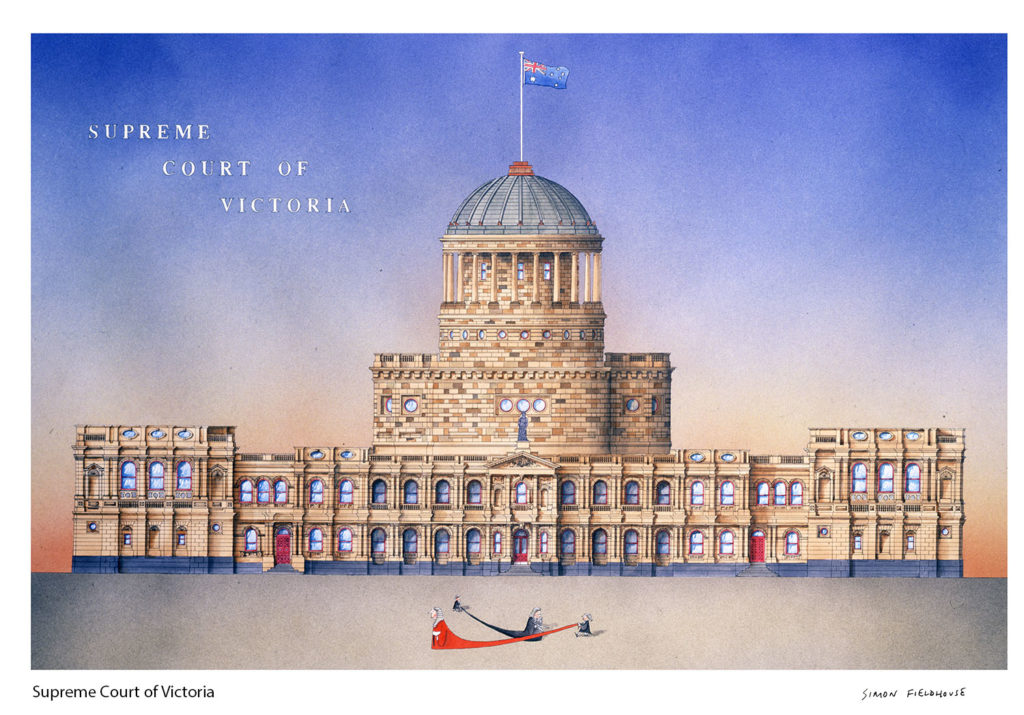
Supreme Court of Victoria
The Supreme Court of Victoria, located at 192 William Street in Melbourne, Australia, is a prominent institution that has played a pivotal role in the administration of justice in the state of Victoria. This iconic building, with its rich history and architectural grandeur, serves as the epicenter of legal proceedings and judicial decisions in the region.
The Supreme Court of Victoria at 192 William Street is an architectural masterpiece, a testament to the rich heritage of Melbourne. Its construction was completed in 1884, and it stands as a stunning example of the neoclassical architectural style. The façade, adorned with intricate columns and a magnificent dome, exudes a sense of authority and dignity. The building has not only been the setting for countless legal proceedings but has also served as an embodiment of justice in the city.
In terms of function, the Supreme Court of Victoria is the highest court in the state. It hears both criminal and civil cases, making it a crucial institution in the legal landscape of Victoria. With its imposing presence and historical significance, it's a symbol of the rule of law and a reminder of the importance of a fair and just society.
The court is divided into various divisions, each specializing in different aspects of law. The Court of Appeal, for instance, deals with appeals from lower courts, ensuring that justice is upheld and interpreted correctly. The Trial Division conducts hearings for serious criminal cases, while the Commercial Court handles complex civil matters, including commercial disputes. The Court also plays a role in administrative law, reviewing government decisions and ensuring they are made in accordance with the law.
One of the most noteworthy features of the Supreme Court of Victoria is its commitment to transparency and accessibility. The court allows public access to hearings, thereby promoting accountability and public understanding of the judicial process. This openness is a crucial element in maintaining public trust in the justice system.
In addition to its legal functions, the Supreme Court of Victoria at 192 William Street has a cultural significance. Its impressive architecture, historical significance, and the various art installations within the building make it a hub for both legal professionals and tourists interested in history and architecture.
In conclusion, the Supreme Court of Victoria at 192 William Street, Melbourne, is an architectural marvel, a cornerstone of the legal system in Victoria, and a symbol of justice and democracy. Its rich history, impressive architecture, and commitment to upholding the rule of law make it a revered institution in the state. It serves as a reminder that the pursuit of justice is an ongoing endeavor and that the principles of fairness, accountability, and transparency are the cornerstones of any thriving democracy.
The exterior of the building is characterized by its grandeur. The main façade is dominated by six massive Corinthian columns that support a substantial entablature, creating a sense of strength and solidity. The neoclassical design elements draw inspiration from ancient Greek and Roman architecture, which was a common choice for government and institutional buildings during the 19th century. This choice of architectural style was intended to convey the enduring values of justice, democracy, and the rule of law.
The crowning glory of the Supreme Court building is its impressive dome, which is a prominent feature of the Melbourne skyline. The dome, with its striking copper covering and a lantern on top, adds a sense of grandeur and authority to the building. It is not only a symbolic representation of the legal system's enlightenment but also serves as a distinct reference point in the city's urban landscape.
The interior of the Supreme Court is equally captivating. The courtroom chambers are adorned with rich wooden paneling, ornate fixtures, and intricate moldings. The grandeur of the architecture within the courtrooms provides a dignified setting for legal proceedings. The use of natural light and meticulously designed spaces enhances the ambiance, ensuring that the courtrooms are not only functional but also aesthetically pleasing.
Throughout the building, one can find a collection of artwork and sculptures that contribute to the overall elegance and cultural significance of the Supreme Court. These artworks often depict scenes from the legal world, offering a glimpse into the history and tradition of the court.
Moreover, the architectural design of the Supreme Court at 192 William Street is a reflection of the values upheld within its walls: justice, fairness, and the rule of law. It symbolizes the enduring strength and stability of the legal system and its commitment to upholding democratic principles.
The Supreme Court of Victoria at 192 William Street stands as a testament to the enduring appeal of neoclassical architecture, serving not only as a functional institution of justice but also as a piece of living history. Its architectural grandeur, both inside and out, makes it a cherished landmark, and a source of pride for the people of Melbourne. The court's architecture is a constant reminder of the importance of upholding the principles of justice and the rule of law in a democratic society, as well as a testament to the enduring power of thoughtful and enduring design in the urban landscape.